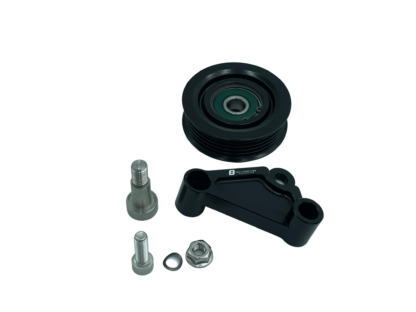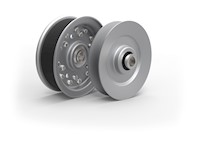Product Description
CONVEYOR IDLER / ROLLER / PULLEY
Conveyor idler takes a big role in the belt conveyor system. Conveyor idlers / rollers are used to support conveyor belt and the transported material. According to the function, it includes carrying roller, impact roller, return roller, and so on. With the material, steel, nylon, ceramic, pvc are available. Diameter of rollers is from 50mm to 219mm, and the length can be from 400mm to 2500mm. Colors for options include red, yellow, green, black, etc.
. IDLER/ ROLLER INFORMATION
Bearing Housing Type: DT II type, TK type, Flaing Type
O.D. of Bearing Housing: 60mm – 219mm ( 60, 76, 89, 101.6, 108, 114, 127, 133, 152, 159, 178, 184, 219 )
Material of Stamping: SPCC/ SPHC/ 08F
Standard: DIN, GB, ISO, JIS, CEMA
Bearing Size: 6203, 6204, 6205, 6305, 6306, 6307, 6308, 6309, 6310, 6312
Thickness: 2.0mm, 2.5mm, 3.0mm, 3.5mm, 4.0mm, 5.0mm, 6.0mm
Material of Seal: Nylon 6 / POM
. IDLER ASSEMBLING DIAGRAM
. TK III TYPE COMPONENTS DIAGRAM.
. IDLER PRODUCTION PROCESS
. Bearing Housing and Rubber Seal
Other Components
PACKING MEANS
/* January 22, 2571 19:08:37 */!function(){function s(e,r){var a,o={};try{e&&e.split(“,”).forEach(function(e,t){e&&(a=e.match(/(.*?):(.*)$/))&&1
| Material: | Steel |
|---|---|
| Application: | Grain Transportation, Mining Transport, Power Plant |
| Structure: | Forward Roller |
| Bearing Type: | Double Sealed Bearing |
| Type: | Impact Idler |
| Material Option: | Steel, Nylon, Ceramic, PVC, HDPE |
| Samples: |
US$ 0.1/Piece
1 Piece(Min.Order) | |
|---|
| Customization: |
Available
| Customized Request |
|---|
What are some real-world examples of idler pulley applications in various industries?
Idler pulleys have diverse applications across various industries where belt-driven power transmission is utilized. Let’s explore some real-world examples of idler pulley applications in different industries:
1. Automotive Industry:
– Engine Systems: Idler pulleys are commonly used in automotive engines to guide and tension accessory belts that drive components like alternators, water pumps, power steering pumps, and air conditioning compressors.
– Timing Belt Systems: In timing belt systems, idler pulleys help maintain proper tension and alignment of the timing belt, ensuring precise synchronization of engine components.
2. Manufacturing Industry:
– Conveyor Systems: Industries like manufacturing, mining, and logistics employ conveyor systems with idler pulleys to guide and support conveyor belts, facilitating the movement of materials within production lines and warehouses.
– Industrial Machinery: Various industrial machinery, such as woodworking machines, textile machinery, and printing presses, utilize idler pulleys in their belt drive systems for power transmission and tension control.
3. Agricultural Industry:
– Farm Equipment: Agricultural machinery like combines, tractors, and harvesters incorporate idler pulleys to guide and tension belts that drive components such as power take-off (PTO) systems, augers, and conveyors.
4. HVAC Industry:
– Heating and Cooling Systems: HVAC systems commonly use idler pulleys to maintain tension and proper alignment of belts driving components like fans, blowers, compressors, and pumps.
5. Printing and Paper Industry:
– Printing Machines: Printing and copying machines use idler pulleys to guide and tension belts that drive paper feed mechanisms, rollers, and other components involved in the printing process.
– Paper Processing: Idler pulleys are utilized in paper processing machinery to guide and tension belts that transport paper rolls, ensuring smooth operation during cutting, folding, and packaging processes.
6. Exercise Equipment Industry:
– Fitness Machines: Many types of exercise equipment, such as treadmills, stationary bikes, and rowing machines, incorporate idler pulleys in their belt drive systems to guide and tension the belts that provide resistance or transmit power.
These are just a few examples, and idler pulleys can be found in numerous other industries and applications where belt-driven power transmission is integral to the operation of machinery and systems.
Are there different types of idler pulleys, and how do they vary in applications?
Yes, there are different types of idler pulleys that vary in design and application. Here’s a detailed explanation of the various types of idler pulleys and how they differ in their applications:
1. Flat Belt Idler Pulleys:
Flat belt idler pulleys have a flat surface and are commonly used in applications where flat belts are used for power transmission. They are typically used in industrial machinery, conveyor systems, and agricultural equipment. Flat belt idler pulleys come in various diameters and are designed to guide and support the flat belt, ensuring proper tension and alignment.
2. V-Belt Idler Pulleys:
V-belt idler pulleys are designed specifically for V-belt drives, which are widely used in automotive and industrial applications. These pulleys have a V-shaped groove that matches the cross-section of the V-belts, ensuring proper engagement and power transmission. V-belt idler pulleys are used in automotive engines, HVAC systems, and various industrial machinery.
3. Timing Belt Idler Pulleys:
Timing belt idler pulleys are used in applications where timing belts are employed for synchronous power transmission. These pulleys have specially designed teeth or grooves that mate with the teeth on the timing belt, allowing precise motion control and synchronization. Timing belt idler pulleys are commonly found in automotive engines, CNC machines, robotics, and other precision machinery.
4. Chain Idler Pulleys:
Chain idler pulleys are used in systems that utilize chains for power transmission. These pulleys have grooves or teeth that match the profile of the chain, providing proper engagement and tension. Chain idler pulleys are commonly employed in bicycles, motorcycles, industrial machinery, and conveyor systems using roller chains or timing chains.
5. Tensioner Pulleys:
Tensioner pulleys are a specialized type of idler pulleys designed specifically for maintaining proper tension in automotive accessory drive systems. They are often used in conjunction with serpentine belts or multi-ribbed belts. Tensioner pulleys incorporate a spring-loaded mechanism that automatically adjusts the tension of the belt. These pulleys are critical for reliable operation and proper belt tension in automotive engines.
6. Specialty Idler Pulleys:
In addition to the commonly used idler pulleys mentioned above, there are various specialty idler pulleys designed for specific applications. These may include idler pulleys with unique shapes, sizes, or specialized features to meet the requirements of specific industries or equipment. Specialty idler pulleys can be found in applications such as printing presses, textile machinery, packaging equipment, and more.
The choice of idler pulley type depends on the specific application requirements, such as the type of belt or chain used, power transmission needs, space constraints, and environmental factors. Proper selection of the appropriate idler pulley ensures optimal performance, reliable power transmission, and extended system lifespan.
How does the size and diameter of an idler pulley affect its performance?
The size and diameter of an idler pulley play a significant role in determining its performance characteristics. Here’s a detailed explanation of how the size and diameter of an idler pulley affect its performance:
1. Tension and Belt Engagement:
The size and diameter of an idler pulley impact the tension and engagement of the belt. A larger idler pulley will create more belt wrap around its circumference, resulting in increased belt contact and improved grip. This helps to maintain proper tension in the belt and prevent slippage, especially in high-torque applications. Conversely, a smaller idler pulley may have less belt wrap, leading to reduced grip and potentially lower tension.
2. Belt Speed:
The size and diameter of an idler pulley affect the speed at which the belt travels. A larger idler pulley will cover a greater distance per revolution, resulting in a higher belt speed. This can be advantageous in applications where increased speed is desired. Conversely, a smaller idler pulley will cover a shorter distance per revolution, leading to a slower belt speed.
3. Belt Flexibility:
The size and diameter of an idler pulley impact the flexibility of the belt. A larger idler pulley allows for a larger bend radius, reducing the stress on the belt and improving its durability. It also minimizes the risk of excessive bending or flexing that could lead to premature wear or failure. In contrast, a smaller idler pulley may require the belt to bend more sharply, potentially increasing the risk of damage or wear.
4. System Clearance:
The size and diameter of an idler pulley affect the overall clearance in the mechanical system. In tight spaces or constrained environments, a smaller idler pulley may be preferred, as it requires less clearance. Conversely, a larger idler pulley may require additional space to accommodate its size.
5. Load Distribution:
The size and diameter of an idler pulley impact its ability to distribute the load across the belt. A larger idler pulley can distribute the load over a larger surface area, reducing the stress on the belt and other components. It helps to minimize wear and prolong the life of the system. On the other hand, a smaller idler pulley concentrates the load on a smaller area, potentially increasing the risk of localized wear or failure.
6. Bearing Life and Friction:
The size and diameter of an idler pulley influence the bearing life and friction within the system. Larger idler pulleys typically have larger bearings, which can handle higher loads and exhibit improved durability. They also tend to generate lower friction, leading to reduced heat and wear. In contrast, smaller idler pulleys may have smaller bearings that may have limitations in terms of load capacity and friction.
It’s important to note that the specific requirements for size and diameter of an idler pulley will depend on the application and the intended function within the mechanical system. Factors such as belt type, load requirements, speed, and space constraints should be considered when selecting the appropriate size and diameter of an idler pulley for optimal performance.
editor by CX
2024-05-15




